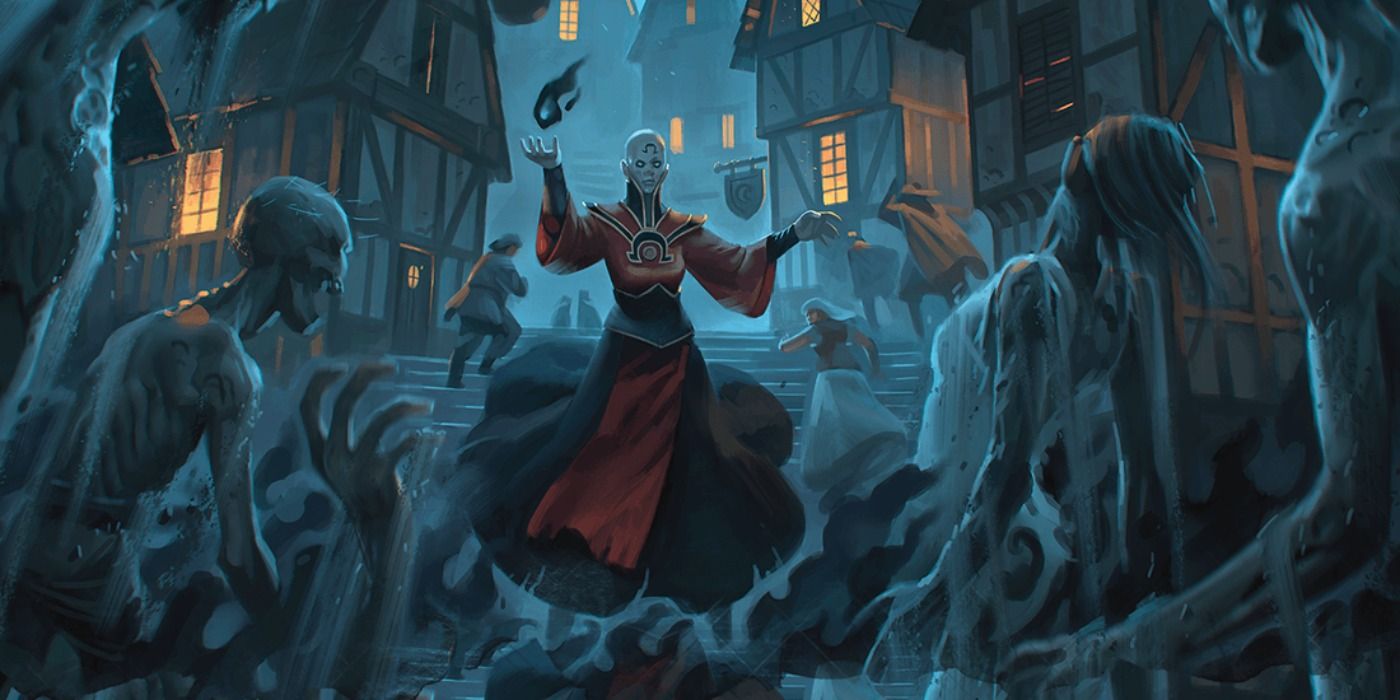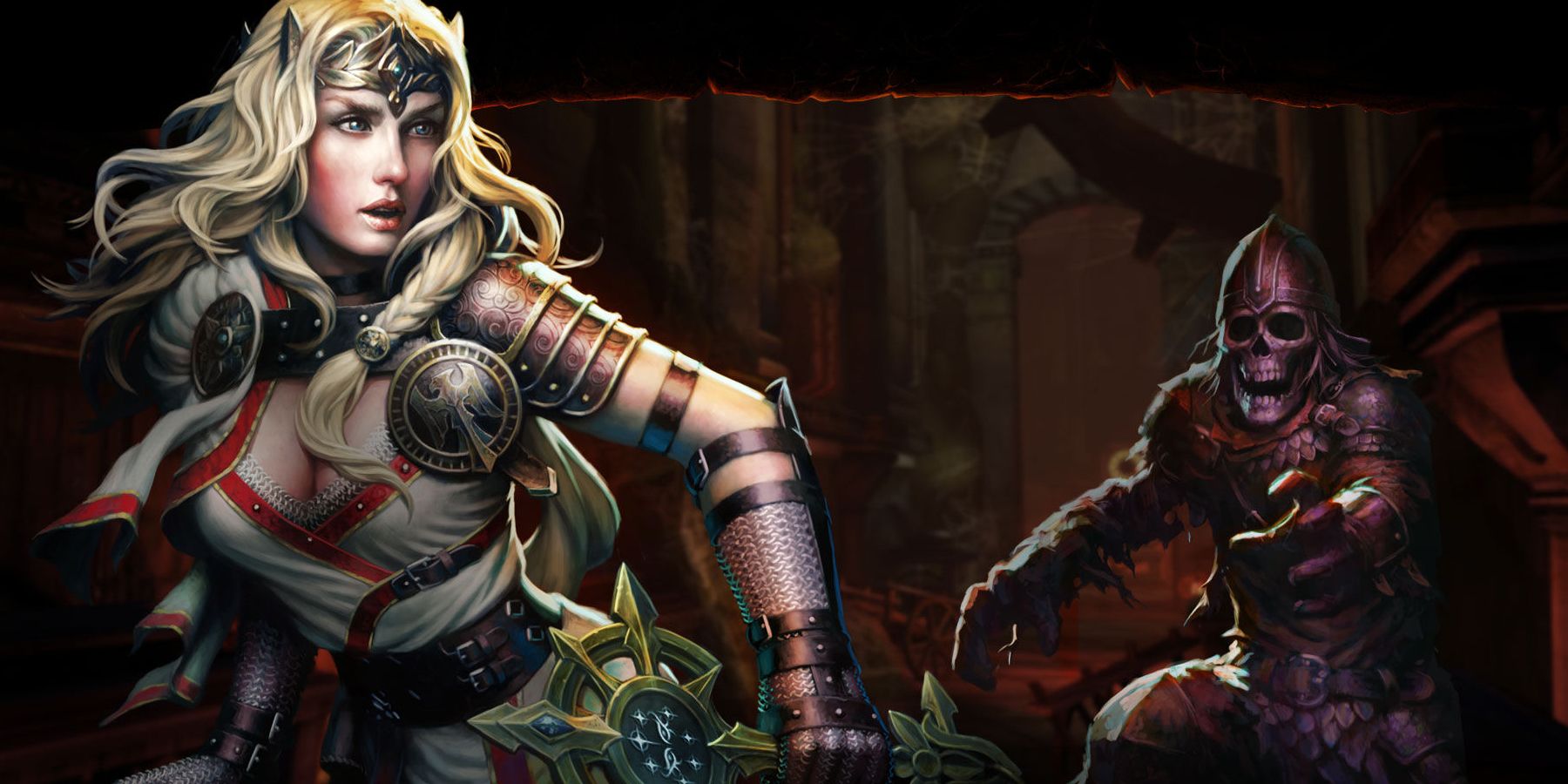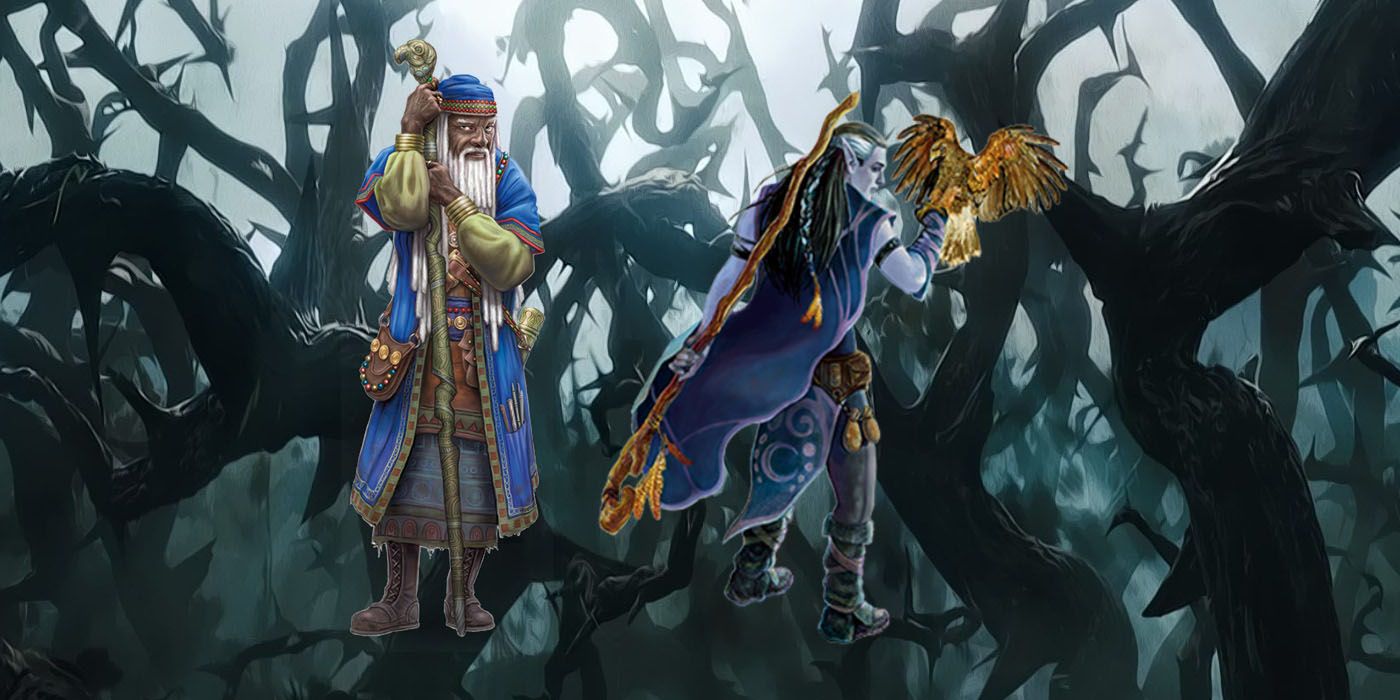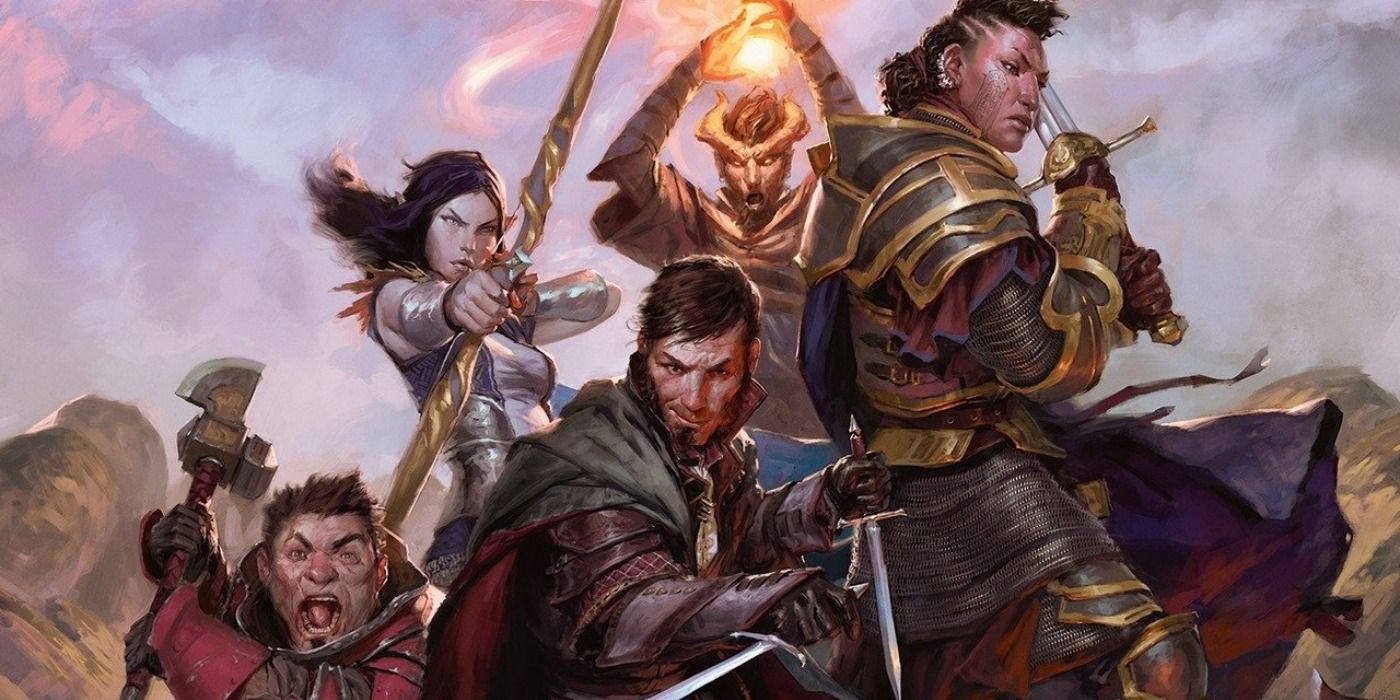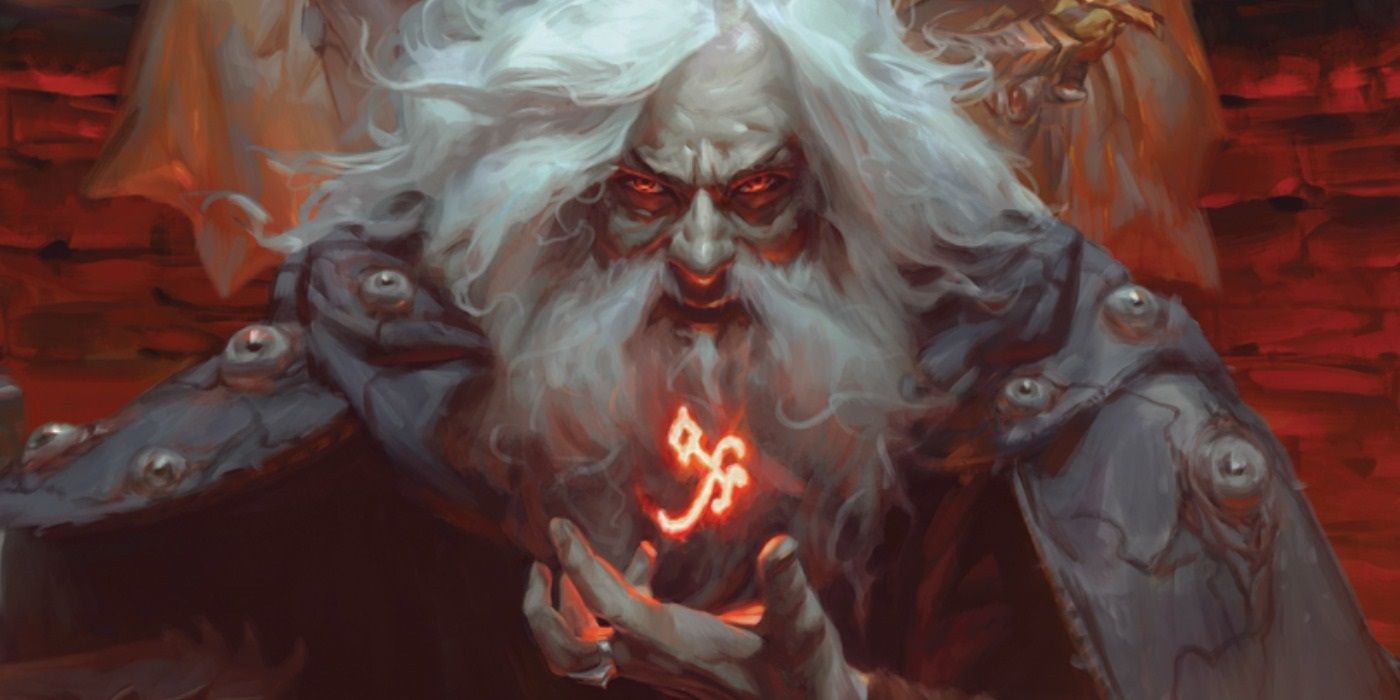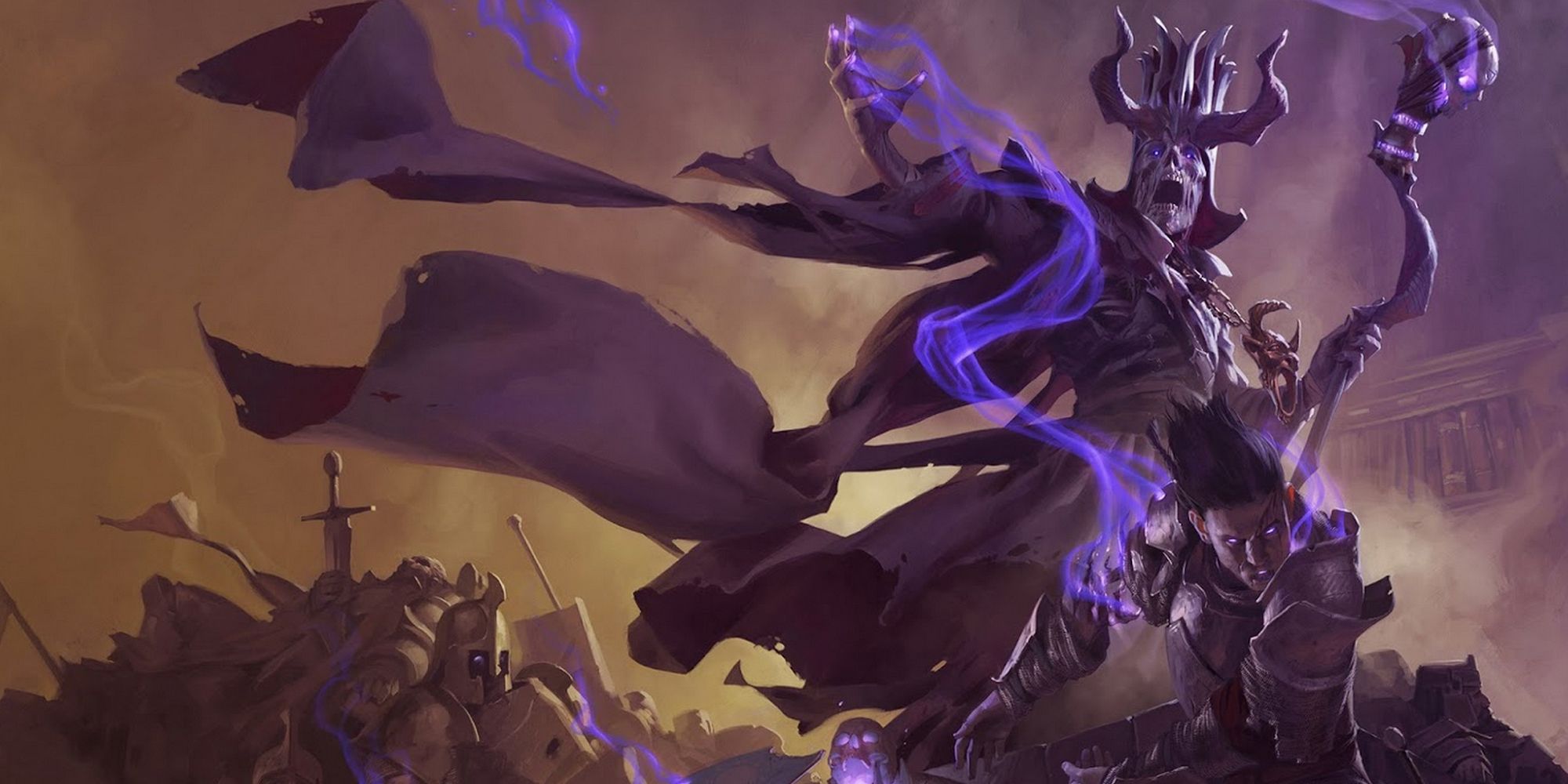Zombies are usually low-level enemies in most Dungeons & Dragons adventures, but they can become major threats in a zombie apocalypse campaign. All a zombie needs to become a problem is the ability to create more zombies with its bite, like they do in a lot of horror franchises.
The reason zombies are a threat is due to their ability to quickly multiply, rather than for their physical strength. If anything, zombies are slow and easy to hide from. It's the fact that they can turn the population of a place like Raccoon City from the Resident Evil franchise that makes them scary, even if zombies are fairly easy to defeat in D&D in small groups.
The average D&D campaign is full of all kinds of threats. It doesn't take long for players to outgrow skeletons and zombies, and move on to bigger foes. There are plenty of spellcasters with the ability to raise a horde of zombies, so it would be easy to create a zombie apocalypse D&D campaign. While Van Richten's Guide to Ravenloft has a Domain of Dread themed around zombies, DMs can also use the idea in a standard fantasy setting.
D&D Zombie Apocalypse: How It Begins
Most zombie movies that use a contemporary or futuristic setting establish that the undead are created through a scientific source, usually a virus. In D&D, the basic undead monsters (zombies and skeletons) cannot pass their condition on to those they injure or slay. There are some stronger undead in Dungeons & Dragons that can do this, like vampires, but the rank and file creatures of the night are usually created by necromancers.
The idea behind the D&D zombie apocalypse campaign is that the basic undead have gained the ability to turn those they kill into more of their kind. This means that if a skeleton or a zombie kills a living being, then they become undead. All living beings are affected by this ability, which means the playable races, animals, and even monsters can now be transformed into undead after being killed by one. The reason basic undead have gained this ability is due to a union of seven Necromancers, who combined their skills and performed one magical ritual that allowed them to create this new breed of undead.
They slowly amassed a large force in secret and unleashed it upon the world. By the time anyone realized what was going on, it was too late. Massive armies of undead creatures swarmed the land, adding to their numbers wherever they went. The survivors fled to the last remaining cities, which have now become fortresses. The call soon goes out for D&D adventurers to perform dangerous missions in the lands that are now teeming with the undead, bringing the players into the picture.
A D&D Homebrew Setting & Restricted Spells For The Zombie Apocalypse
There are a number of settings available to D&D players, but a zombie apocalypse campaign is one time when a homebrew setting would be ideal. There's a lot of baggage involved with the existing settings that make it hard to do sweeping changes without a ton of extra work. For one thing, the DM would need to explain why the established characters in the setting haven't fixed such a huge problem. A character like Elminster or Mordenkainen would have likely stepped in and nuked the undead horde before they obliterated society, to say nothing of the numerous other high-level heroes in the lore of the Forgotten Realms and Greyhawk.
The fact that so much of the world has been devastated means that the DM doesn't need to do a lot of work. They can use a single continent, create outlines for the few remaining bastions of society and flesh them out as they go along. Even a zombie apocalypse D&D map wouldn't require much work. The majority of the cities and towns that would normally exist would all be abandoned or destroyed.
One important aspect of the campaign would be restricting or banning the use of certain spells, which is easier to do in a homebrew setting. The DM will want survival to be the key theme of the campaign, which means no spells that produce food. Goodberry is an amazing Druid spell in Dungeons & Dragons, but its ability to nourish people would eliminate a lot of the tension when traveling through enemy lands. The same goes for create and destroy water. Spells that give the player the ability to fast travel between locations should also be heavily restricted. There's no need to outright ban spells like teleport or wind walk, but they should have a high price attached to their use in terms of expensive or rare components. This means players cannot zip around the map at will, nor can the zombie apocalypse D&D campaign's supply problems be easily solved with magic.
Low-Level Quests In D&D's Zombie Apocalypse - Couriers & Saviors
The remaining spellcasters in the surviving cities have tried using magic to contact each other from a distance, but they realized that they were being watched. This tips them off that there is a group behind the zombie apocalypse D&D campaign's horde, and they discover the existence of the ritual that's empowering the enemy. Seeking out the perpetrators behind the horde will have to wait, however, as more conventional means of communication in D&D will need to be created. It's up to the players to act as couriers, deliverymen, and messengers. They must travel between the last bastions of society and create a communication network between its remaining leaders. They will face off against countless undead on their journey, earning a name for themselves in the process.
Mid-Level Quests For D&D's Zombie Apocalypse - The Power Behind The Horde
Now that the players have earned a reputation in this Dungeons & Dragons zombie apocalypse campaign, they are chosen as diplomats to reach out to societies that have completely cut themselves off from the outside world, like dwarves in their underground cities or elves in forests shrouded by magic. They could even be called on to create relationships with monster societies in D&D, who are also battling the undead.
Most importantly, they learn of the existence of good dragons in the region. The dragons could roast the undead hordes from the skies, making them invaluable allies. Unfortunately, the Necromancers also discover this and start hunting the dragons down, turning them into undead servants. The players finally meet one of the Necromancers responsible for the horde and slay them in the zombie apocalypse D&D campaign's climactic battle, perhaps earning a dragon ally in the process. More importantly, once they return home, the spellcasters who discovered the existence of the ritual felt it grow weaker when the Necromancer died. This means that hunting and killing those who originally performed the ritual could cause its power to fade away, preventing the undead from replenishing their numbers.
High-Level Quests For D&D's Zombie Apocalypse - The Living Strike Back
The Necromancers start to gather their forces into one massive army, so that it can be used to overrun the remaining cities. The zombie apocalypse D&D campaign players now have a race against time, as they seek out each of the remaining Necromancers and fight them. These high-level casters are hiding in dungeons filled with all kinds of monsters and traps, so getting to them won't be easy. Once there is only one Necromancer left, it's revealed that they have transformed into a lich, becoming one of the strongest creatures in D&D's Monster Manual. The finale of the zombie apocalypse campaign involves the players defeating the lich and breaking the ritual, allowing the undead army to be destroyed by the allies they made along the way.
It's important that the DM establish a light at the end of the tunnel early on in the campaign. A zombie apocalypse scenario can quickly seem hopeless, and players are less likely to become engaged in the story if the only ending involves being turned into a monster. Dungeons & Dragons is about different people working together in order to achieve things they cannot do on their own, and few things will encourage cooperation among D&D players than being the last hope of a world in danger of falling to evil.

